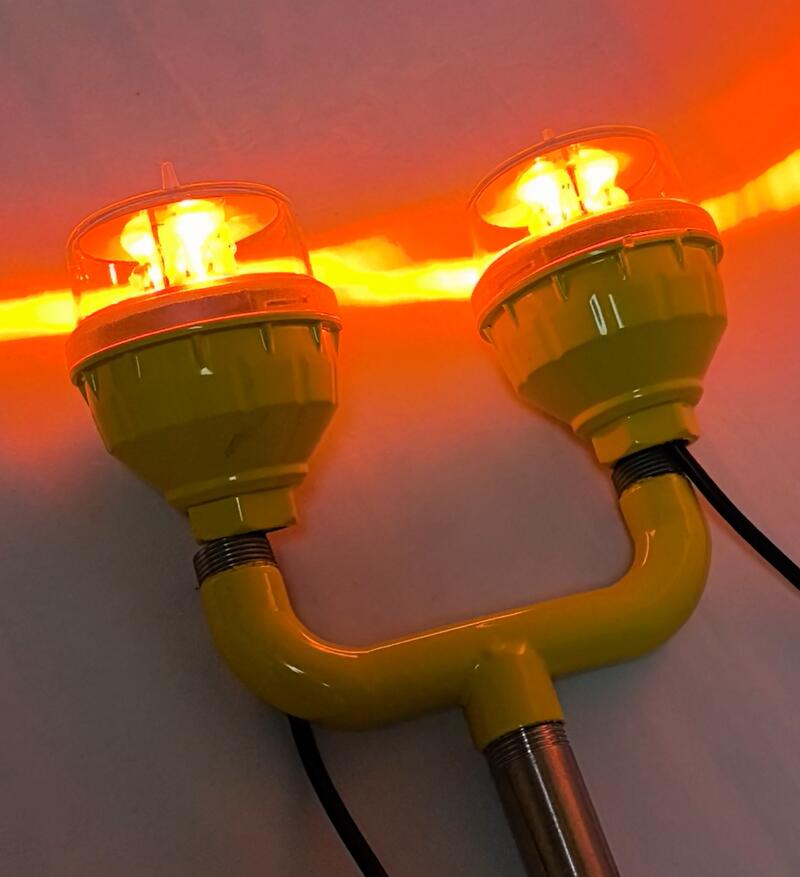
In the realm of scientific inquiry and technological advancement, there exists a phenomenon that often goes unnoticed yet holds significant implications – low intensity obstruction light. This seemingly innocuous combination of words conceals a complex web of challenges and opportunities that are only beginning to be understood.
Low intensity obstruction light refers to a form of light that is of relatively low power but can cause obstructions or interference in various contexts. It is not the blinding glare of a high-intensity spotlight but rather a subtle and often overlooked presence. This type of light can arise from a multitude of sources, including natural phenomena, human activities, and technological devices.

One area where low intensity obstruction light plays a crucial role is in astronomy. The night sky, a source of wonder and inspiration for generations, is increasingly being threatened by light pollution. Low intensity obstruction lights from urban areas, such as streetlights, billboards, and building illuminations, can wash out the faint glow of distant stars and galaxies. This not only detracts from the aesthetic beauty of the night sky but also hampers astronomical research. Astronomers rely on the darkness of the night to observe and study celestial objects, and even a small amount of low intensity obstruction light can have a significant impact on their observations. For example, faint stars that are barely visible in a dark sky may be completely obscured by the glow of nearby urban areas. This interference can lead to inaccurate measurements and a limited understanding of the universe.
Low Intensity Obstruction Light
W2
W3
W1
In the field of aviation, low intensity obstruction light can pose a serious threat to flight safety. Airports and aircraft rely on a complex network of navigation lights and signals to ensure safe takeoffs, landings, and flights. However, low intensity obstruction lights from nearby structures, such as tall buildings, communication towers, and wind turbines, can create confusion and distractions for pilots. These lights can be mistaken for navigation aids or cause visual illusions, potentially leading to dangerous situations. To address this issue, strict regulations and guidelines are in place to control the placement and intensity of lights near airports and flight paths.
Additionally, pilots are trained to be vigilant and to quickly identify and respond to potential obstructions caused by low intensity lights.
Telecommunications is another area where low intensity obstruction light can have a significant impact. Optical fibers, which form the backbone of modern communication networks, rely on the transmission of light signals. Low intensity obstruction lights from external sources can interfere with these signals, causing disruptions and reducing the quality of communication. This can be particularly problematic in areas with high levels of electromagnetic interference or where there are multiple sources of light. Telecommunication companies employ advanced technologies and techniques to minimize the effects of low intensity obstruction lights, such as using filters, shielding, and signal processing algorithms.
Environmental science is also concerned with low intensity obstruction light. Many species of animals, especially those that are active at night, rely on the darkness of their environment for survival. Low intensity obstruction lights can disrupt their natural behaviors and habitats. For example, sea turtles are known to be attracted to bright lights, and low intensity obstruction lights along the coast can lead them astray and endanger their nesting sites. Similarly, birds can be disoriented by lights, causing them to collide with buildings or other structures. Insects, too, are affected by low intensity obstruction lights, which can disrupt their mating and foraging patterns. Understanding the impact of low intensity obstruction lights on the environment is crucial for implementing measures to protect wildlife and preserve the delicate balance of ecosystems.
Despite the challenges posed by low intensity obstruction light, there are also opportunities for innovation and progress. Researchers and engineers are constantly exploring new ways to harness and manage this phenomenon. For instance, the development of smart lighting systems that can adjust their intensity and direction based on the needs of the environment could help reduce the negative impacts of low intensity obstruction light. Additionally, the use of advanced materials and technologies to filter and block unwanted light could lead to more efficient and sustainable lighting solutions.
In conclusion, low intensity obstruction light is a complex and multifaceted phenomenon that demands our attention. As we continue to advance technologically and expand our urban landscapes, it is essential that we understand the implications of low intensity obstruction light and take steps to mitigate its negative impacts. By working together, we can ensure that the wonders of the night sky, the safety of aviation, the efficiency of telecommunications, and the health of our environment are preserved for future generations.